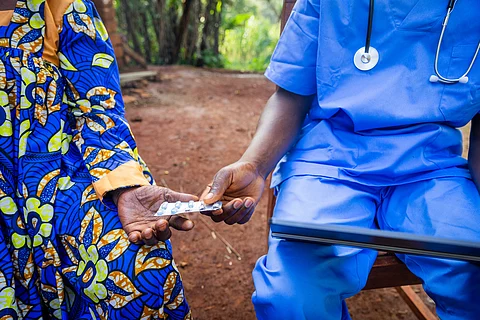

A vital study presented at the ESCMID Global 2025 conference has revealed a disturbing escalation in child mortality linked to antimicrobial resistance (AMR), with over three million children worldwide succumbing to drug-resistant infections in 2022 alone.
The research, conducted by a team of international experts including Dr. Yanhong Jessika Hu from Australia's Murdoch Children's Research Institute and Professor Herb Harwell of the Clinton Health Access Initiative, paints a particularly grim picture for developing regions, where 659,000 African children and 752,000 Southeast Asian children lost their lives to AMR-related illnesses in the same year. These staggering figures underscore what global health authorities are now calling one of the most pressing medical challenges of our time.
The crisis stems from a dangerous combination of factors, with the overuse and misuse of antibiotics emerging as primary culprits. The study documents an alarming surge in prescriptions for high-risk antibiotics across vulnerable regions between 2019 and 2021.
'Watch antibiotics', which carry a significant resistance risk, saw usage spikes of 160 per cent in Southeast Asia and 126 per cent in Africa, while reserved antibiotics — meant only for the most severe, treatment-resistant cases — experienced increases of 45 per cent and 125 per cent in these regions respectively.
This troubling trend reflects systemic issues in healthcare delivery, particularly in areas where limited diagnostic capabilities often lead to inappropriate antibiotic prescriptions. Many healthcare providers in resource-limited settings, facing uncertainty about infections and pressure to treat sick children, are compelled to rely on these stronger medications as a first resort rather than as carefully considered last options.
The ramifications of this crisis extend far beyond immediate mortality figures. Researchers warn that the accelerating pace of antimicrobial resistance threatens to undo decades of progress in child survival and infectious disease control.
As common antibiotics lose their effectiveness, previously treatable conditions like pneumonia, sepsis, and diarrheal diseases are becoming increasingly deadly for children in affected regions. The study highlights how this vicious cycle disproportionately impacts low- and middle-income countries, where healthcare infrastructure gaps and medication access challenges create ideal conditions for resistance to flourish. Compounding the problem, the development of new antibiotics has stagnated in recent years, leaving healthcare systems with dwindling options to combat evolving pathogens.
In response to these findings, the research team is calling for immediate, coordinated global action. Their recommendations emphasize the urgent need for enhanced antibiotic stewardship programs to ensure these critical medications are used appropriately, particularly in high-risk regions. They also stress the importance of investing in rapid diagnostic tools that can help healthcare providers make more accurate treatment decisions, thereby reducing unnecessary antibiotic use. Furthermore, the study advocates for expanded access to safer "access" antibiotics — those with lower resistance potential — as first-line treatments for common infections.
The political dimension of this health crisis came into sharp focus at the 2024 UN High-Level Meeting on AMR, where world leaders adopted a Political Declaration recognising antimicrobial resistance as a top-tier global health threat.
This document specifically highlights the need to protect vulnerable populations, including children, from the growing dangers of drug-resistant infections. The declaration's emphasis on reducing child mortality and morbidity aligns closely with the study's findings, creating a potential framework for international cooperation on this issue.
The research team's analysis draws on comprehensive data from multiple authoritative sources, including the Pfizer ATLAS program (accessed through the Vivli platform), WHO's GLASS antibiotic use reports, World Bank demographic data, and IHME mortality statistics.
This multi-source approach lends considerable weight to their conclusions and recommendations.
As the global community grapples with the implications of these findings, one message emerges with crystal clarity: without swift, decisive action to address antimicrobial resistance, the world risks sliding backward in its fight against infectious diseases, with children paying the heaviest price. The study serves as both a wake-up call and a roadmap for preserving the effectiveness of these life-saving medications for future generations.